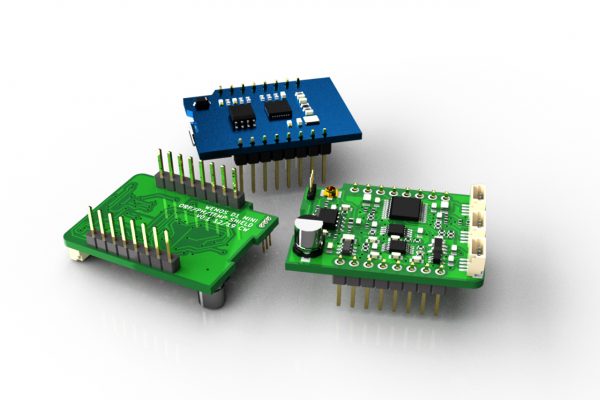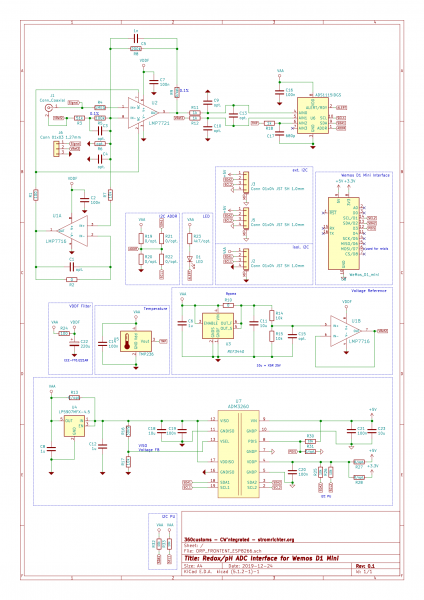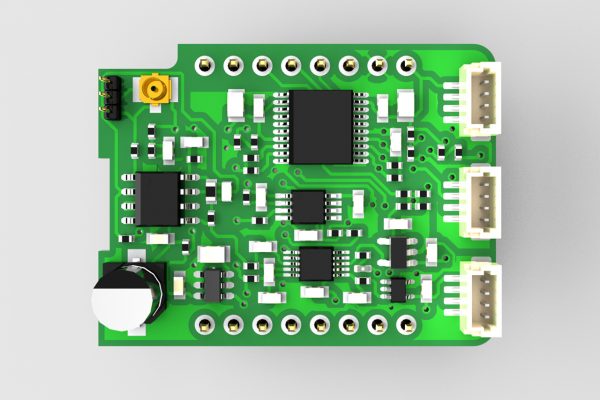ORP / Redox / PH electrometer Shield for Wemos D1 Mini with LMP7721 ADS1115 ADM3260
A shield compatible with the Wemos D1 Mini, alternatively generic via I2C on any controller, will be demonstrated. It implements an electrometer amplifier for measuring pH/ORP/redox potential based on the TI LMP7721.
The potential is measured via the LMP7721 in non-inverted arrangement. The potential of the inverting input and thus also of the measuring chain is raised by a bias voltage in order to be able to record positive and negative values for the redox/ORP potential. This bias/reference voltage is supplied by a TI REF3440 Voltage reference followed by a buffer from TI LMP7716 provided. This also drives the guard ring that encloses the input signal. The system temperature is determined by TI TMP236 which has almost the same performance data (A2 level, +-0.5°C at 25°C) as the TI LM35 . In comparison to this, the housing design is considerably smaller.
AGML battery charger
Both the electrometer amplifier and the temperature sensor are read out by an TI ADS1115 16-bit I2C ADC. The connection of the electrometer amplifier is "pseudo-differential" in this application, given that the bias/reference voltage is also fed in, which should eliminate possible interference. The connection to the controller is isolated, an I2C bus isolator from Analog Devices (ADM3260) is used. This also provides the isolated supply voltage, which is supplied via TI LP5907 is filtered for the electrometer amplifier. The external I2C interface can be configured for 3.3V or 5V.
Comparing this with other solutions or implementations available on the market, one will find that this solution definitely meets the requirements of "overengineered". As an altenative to the LMP7721, an ADA4530-1 may be used, which has the guard ring driver already integrated. It is planned to substitute the voltage reference REF3440 as well as the Ultra-Low Noise LDO LP5907 with 0R resistors, if the remaining system performance is sufficient. In addition, there is potential for savings in the local decoupling capacity.
The shield supports "daisy-chaining" so that multiple modules can be used in parallel and/or in a remote location.















Sooooo… has performance been checked without the REF3440 and LP5907 ?
No.
Hello Christian, great project! What is not clear to me yet, can I use the same circuit for ORP and PH? Do you then simply measure a different voltage range? With the Phidgets that can be found online, you have to flip a switch if you want to measure ORP or PH. Is that omitted here?
Thank you!
Tobi
Correctly. However, an mx + n calibration / adjustment must be carried out for the pH measurement.
Hi Christian, I really like this project 🙂
Are you willing to share more information?
Regards.
These modules would be exactly what I'm looking for.
Where can you buy them?
For blank boards, write me an email. Greetings Christian